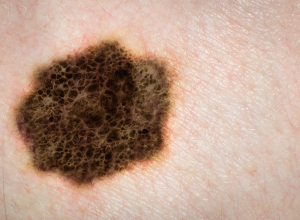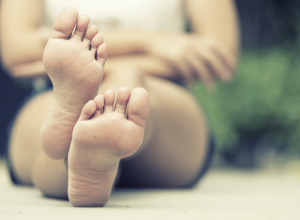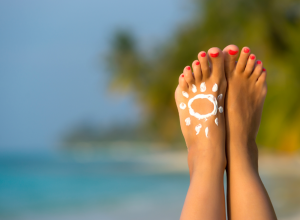
Acral Lentiginous Melanoma (ALM)
Acral lentiginous melanoma (ALM) is a serious type of skin cancer that shows up on the soles of the feet, the palms of the hands, and under fingernails (subungual melanoma). It's one of the few skin cancers not attributed to sun exposure.
Symptoms Of Acral Lentiginous Melanoma
Signs of acral lentiginous melanoma include longitudinal tan, black or brown lines on a fingernail or toenail, pigmentation of the proximal nail fold and areas of dark pigmentation on the soles of the feet or palms of the hands. The same ABCDE rule that applies to most melanoma cases and examination of a mole (nevus) also applies to this type of melanoma: Asymmetry, Border irregularity, Color variation, Diameter and Evolving.
Most cases of ALM appear on the feet. Experts estimate only about 22% appear on the hands.
Causes of Acral Lentiginous Melanoma
Acral lentiginous melanoma is rare in Caucasians and typically affects people of Asian and black ethnicity: it accounts for up to 72% of melanoma cases in dark-skinned humans and less than 1% of melanoma cases in light-skinned humans. It generally occurs in people over the age of 40, and most cases are reported in Australia and New Zealand. However, its exact cause is unknown, as sun exposure has been ruled out as the leading factor.
Treatment Of ALM
After a doctor performs a dermoscopy or biopsy and diagnoses acral lentiginous melanoma, treatment options vary depending on the severity of the condition. Treatment options include excision of the abnormal skin/nails, digital amputation, chemotherapy, and lymphangiogram with lymph node dissection. Because fungal infections of the nail also cause nail discoloration, it’s important you do not receive a misdiagnosis and proper treatment is given for whatever nail ailment you have.
Notice concerning medical entries:
Articles having medical content shall serve exclusively for the purpose of general information. Such articles are not suitable for any (self-) diagnosis and treatment of individual illnesses and medical indications. In particular, they cannot substitute for the examination, advice, or treatment by a licensed physician or pharmacist. No replies to any individual questions shall be effected through the articles.









